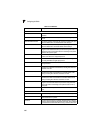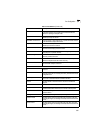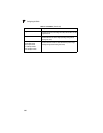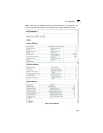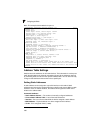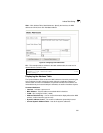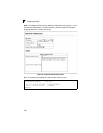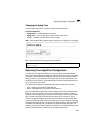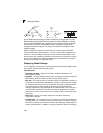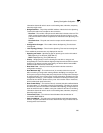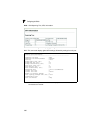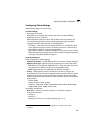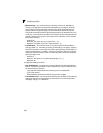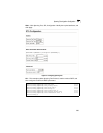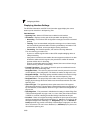
Configuring the Switch
3-94
3
Once a stable network topology has been established, all bridges listen for Hello
BPDUs (Bridge Protocol Data Units) transmitted from the Root Bridge. If a bridge
does not get a Hello BPDU after a predefined interval (Maximum Age), the bridge
assumes that the link to the Root Bridge is down. This bridge will then initiate
negotiations with other bridges to reconfigure the network to reestablish a valid
network topology.
RSTP is designed as a general replacement for the slower, legacy STP. RSTP
achieves must faster reconfiguration (i.e., around 1 to 3 seconds, compared to 30
seconds or more for STP) by reducing the number of state changes before active
ports start learning, predefining an alternate route that can be used when a node or
port fails, and retaining the forwarding database for ports insensitive to changes in
the tree structure when reconfiguration occurs.
Displaying Global Settings
You can display a summary of the current bridge STA information that applies to the
entire switch using the STA Information screen.
Field Attributes
• Spanning Tree State – Shows if the switch is enabled to participate in an
STA-compliant network.
• Bridge ID – A unique identifier for this bridge, consisting of the bridge priority and
MAC address (where the address is taken from the switch system).
• Max Age – The maximum time (in seconds) a device can wait without receiving a
configuration message before attempting to reconfigure. All device ports (except
for designated ports) should receive configuration messages at regular intervals.
Any port that ages out STA information (provided in the last configuration
message) becomes the designated port for the attached LAN. If it is a root port, a
new root port is selected from among the device ports attached to the network.
(References to “ports” in this section mean “interfaces,” which includes both ports
and trunks.)
• Hello Time – Interval (in seconds) at which the root device transmits a
configuration message.
• Forward Delay – The maximum time (in seconds) the root device will wait before
changing states (i.e., discarding to learning to forwarding). This delay is required
because every device must receive information about topology changes before it
starts to forward frames. In addition, each port needs time to listen for conflicting
x
Designated
Root
Designated
Port
Designated
Bridge
x x
x
Root
Port
x



